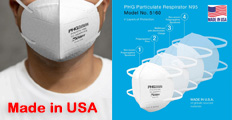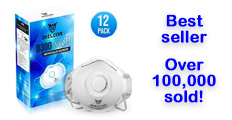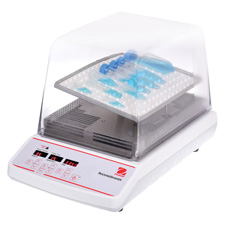



Find all of your laboratory and workplace safety supplies at Safety Emporium!
 Target Organ Effects |
 Glossary Index |
 Teratogen |
| MSDS Topics |
Free Sites | FAQ's | Regulations | Glossary | Software | Suppliers |
| Books | Forum | Poll | Fun stuff | Quiz | Store | |
| Understand your MSDS with the MS-Demystifier | Search ALL our MSDS info | |||||
There are five temperature scales one might encounter, but only the first three listed here are of any current significance. Here is a handy calculator to convert between any of these. Specific definitions of each scale are given in the next section.

If you convert a negative temperature, be sure to include the negative sign! For example,
Many of the items you will find on an Safety Data Sheet come in both English (U.S. Customary System) and metric (International System or SI or cgs) units. The metric system has been adopted by almost every country except the United States. Even in the U.S., scientists and technical people use the metric system because of its ease of use.
| Unit | Equivalent measurements, comments |
|---|---|
| Celsius scale | This scale sets the normal freezing point of water to 0 degrees Celsius and the normal boiling point of water to 100 degrees Celsius. Formerly called the Centigrade scale. A change of 1 degree Celsius equals a change of 9/5 = 1.8 degrees Fahrenheit. To convert a Celsius temperature to Fahrenheit, multiply by 9/5 and add 32. To convert a Celsius temperature to Kelvin, add 273.15 |
| Kelvin scale | This scale sets the lowest obtainable temperature (absolute zero = the temperature at which all molecular motion completely ceases) to 0 degrees. A change of one degree Celsius = a change of one Kelvin, but a Celsius temperature is never equal to a Kelvin temperature. There are no negative temperatures in the Kelvin scale. To convert a Kelvin temperature to Celsius, subtract 273.15. Note: simply use "Kelvin" or "Kelvins", not "degrees Kelvin" when using this unit. |
| Fahrenheit scale | This scale sets the freezing point of water to 32 degrees Fahrenheit and the boiling point of water to 212 degrees Fahrenheit. A change of 1 degree Fahrenheit equals a change of 5/9 = 0.56 degrees Celsius. To convert a Fahrenheit temperature to Celsius, subtract 32 and multiply by 5/9. |
| Rankine scale | This is the Fahrenheit analog of the Kelvin scale. Absolute zero is set to zero and each change of one degree Rankine = a change of one degree Fahrenheit, but a Rankine and Fahrenheit temperature are never equal. Like the Kelvin scale, the Rankine scale has no negative temperatures. |
| Réaumur scale | This is an obsolete temperature scale where the freezing point of water is zero degrees Réaumur and the boiling point of water is 80 degrees Réaumur. |
| Notable Temperatures On The Various Temperature Scales | ||||||||
|---|---|---|---|---|---|---|---|---|
| Absolute Zero | Liquid N2 Boils | CO2 Sublimes | Water Freezes | Human Body T | Water Boils | Gold Melts | Gold Boils | |
| Fahrenheit, °F | -459.67 | -320.4 | -109.26 | 32 | 98.60 | 212 | 1,949 | 4,892 |
| Rankine | 0 | 139.25 | 350.41 | 491.67 | 558.27 | 671.67 | 2,408 | 5,352 |
| Celsius, °C | -273.15 | -195.79 | -78.48 | 0 | 37 | 100 | 1,065 | 2,700 |
| Kelvin, K | 0 | 77.45 | 194.67 | 273.15 | 310.15 | 373.15 | 1,338 | 2,973 |
| Réaumur | -218.52 | -156.63 | -62.78 | 0 | 29.6 | 80 | 852 | 2,160 |
| Note: All measurements are at 1 atm of pressure. See also: boiling point and freezing point. | ||||||||

Safety Emporium has all kinds of lab equipment such as this incubating rocking shakers and more.
Be very careful to note the units when reading temperatures on a Safety Data Sheet. These are usually, but not always, in degrees Celsius. Also remember the tip above; when converting between units, be sure to include the negative sign in your calculation instead of (mistakenly) sticking it in at the end. As with any calculation you write out by hand, be sure to write out your units and make sure they cancel to the desired unit.
See also: area units, distance units, energy units, mass units, mole, pressure units, volume units.
Additional definitions for temperature from Google and OneLook.
Entry last updated: Monday, January 16, 2023. This page is copyright 2000-2025 by ILPI. Unauthorized duplication or posting on other web sites is expressly prohibited. Send suggestions, comments, and new entry desires (include the URL if applicable) to us by email.
Disclaimer: The information contained herein is believed to be true and accurate, however ILPI makes no guarantees concerning the veracity of any statement. Use of any information on this page is at the reader's own risk. ILPI strongly encourages the reader to consult the appropriate local, state and federal agencies concerning the matters discussed herein.